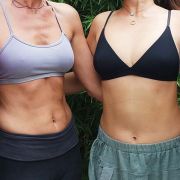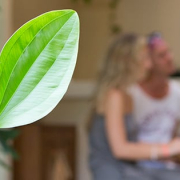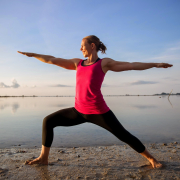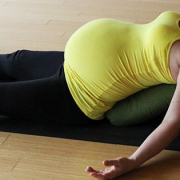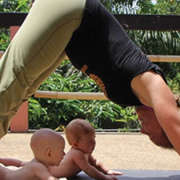 https://samahitaretreat.com/wp-content/uploads/2021/02/nauli-for-women.jpg
533
1000
Gill Breetzke
http://samahitaretreat.com/wp-content/uploads/2024/01/samahita-logo-v2.svg
Gill Breetzke2021-02-08 12:45:002022-11-29 04:35:14Nauli for Women
https://samahitaretreat.com/wp-content/uploads/2021/02/nauli-for-women.jpg
533
1000
Gill Breetzke
http://samahitaretreat.com/wp-content/uploads/2024/01/samahita-logo-v2.svg
Gill Breetzke2021-02-08 12:45:002022-11-29 04:35:14Nauli for WomenPracticing During and Around Our Cycle
A Common Topic of Discussion
Questions that come up in every training and retreat — without fail! -reflect concern about a woman’s monthly cycle. And it is always surprising how many students deal with amenorrhea (absence of periods) or irregular periods.
Often students ask Paul, which many people find funny, considering that he doesn’t have direct experience. But then he is wont to point out (while smiling), “It’s okay because I have been a woman before in many past lifetimes.” He is comfortable discussing the topic and knows more about the topic than many female teachers.
We have all been mothers, fathers, men, women, etc. countless times. And we don’t need to tap into this storehouse of memories and past impressions to empathize with others,to understand what they are going through. We don’t need to have had a period in our presentbody to understand the female cycle. If our intention is to teach, or if we are teaching already, we should know how to advise our students, regardless of our gender.
As women, we need to give personal accounts, and there is the added responsibility to set a good example for our students by staying healthy. While it can be an uncomfortable topic in a co-ed classroom, we should have no problem talking about these things, which are natural and directly affect practice, whether talking in first person or not.
Growing-up with Sports
When I first heard about what a woman should and shouldn’t do in practice during her cycle, I thought it was stupid and archaic. I associated it with how they used to limit a woman’s physical activity in athletics because they were afraid it would hurt her ability to bear children.
I grew up very active – I swam on a swim team from age 3 until age 14, and I ran cross-country and distance track in high school and for two years of college. The attitude was always practice through menses. I dealt with bouts of amenorrhea throughout my teenage years due to stress, unhealthy sleep habits and a very strict vegan diet. Over-activity certainly didn’t help the situation, even though I don’t think it was the primary cause.
Intellectually I knew for years how serious the situation was. But it was my running coach at Bowdoin College, Peter Slovenski, who made me really understand and change; and ironically, he reached me through a very light-hearted, silly yet deeply caringapproach.
Amenorrhea is common among young, female runners. But Coach Slovenski promoted healthy running; he would always say, “Do it for the team!” That meant get our periods for the team. How we ranked or finished in a race was always secondary to our health and healthy attitude.
And he went out of his way to make things fun and stress-free. Distance runs would be runs like “Beans and Back,” which was running 9 miles to the L.L. Bean outlet in Freeport, ME and getting ice cream – or in my case, sorbet. The “Back” was optional, and usually after the ice cream most of us were content to hop in the van and let Coach drive us home.
One thing I have been blessed with over the years is some amazing mentors, teachers and coaches. I caught the problem in time, and my cycle has been very regular now for over 11 years, largely in part to Coach’s lasting influence.
Changing Over Time
I have been doing yoga throughout those 11 years, but in that time my opinion about practicing on my period has changed. I wasn’t as aware of subtle energy and the effect practicing had on my cycle when I was in my early 20’s; things that didn’t bother me before do now. And I wasn’t doing Ashtanga in my early-mid 20’s.
Physically, I have felt shifts in my body over the years. The processes of the body are living things, and like everything they change. Energetically things change as well. Every year my cycle is a little different and every month is also not the same. Our practice should make us increasingly aware of subtle changes.
To respect our cycle doesn’t mean to do the same thing every month, year in and out. Rather, it is to listen to what is going on and to adjust our practice accordingly. What we do this month will not be what we did 10 years ago, what we will do 10 years from now, and maybe not even what we do next month.
One thing Paul reminds me of is that “Nothing is lost.” If we need to alter our practice around our cycle we do not get in the way of our growth. In fact, by respecting the natural processes in the body we are better able to harness and cultivate the energy, and things are less likely to go off.
Ashtanga
Menstruation is an apanic process, like going to the bathroom. Anytime we over engagemulabandha and uddiyanabandhaduring our cycle we are messing with the apanic/downward moving energy, which can easily disturb our cycle. It would be like having to go to the bathroom but holding it in, on a regular basis.
Ashtanga works with mulabandha more than many other forms of asana. Some schools don’t even mention the use mulabandhaduring asana. Definitely watch that you are not overly squeezing mulabandha or you are likely to run into problems with your cycle, constipation, hemorrhoids, etc. It should be a more refined hold, the amount of mulabandha you use varying depending on the intensity of the pose. And a few days before your cycle it could be extra delicate and refined. During the first 2-4 days of your cycle, use only what is minimally necessary.
It is, therefore, advised not to do Ashtanga on the heavy cycle days (taking 2-4 days off). You might take the first two days of your cycle off, even though you could do some gentle or restorative asana. Some months you might decide to skip the third day as well. Other months maybe you find the day or few days before your cycle comes you need to ease up on asana, taking an extra day off due to fatigue.
By the fourth or fifth day (if you are still bleeding at all) you could get back into your regular practice. If you are into Second, maybe you take at least one day of Primary to reset the system. When you get back into your practice you will feel great, happy to have taken the time andgrateful to be practicing normally again.
I am not saying everyone should do the same thing, but every woman should try to find what works for her. We should never listen blindly, but we also don’t want to ignore what we hear or read without taking it into consideration and making sense of it for ourselves. Each of us must figure out a way to practice that is supportive of ourindividual monthly ebb and flow.
What to Practice in Asana During Our Cycle
Of course people know not to do inversions. But a lot of times you will see women modifying their pranayama and skipping the inversions while continuing to do everything else full-on in asana practice.
A lot of jumping (particularly in the Asthanga practice, when the hands are on the ground and you are really working mulabandha), deep binds and twists that work with the internal pressures in the body, any postures that put the feet in lotus or foot in half lotus, anytime you are required to sit on your heel or press your heel into your pelvis (i.e., Janushirshasana B and C), and any poses that require a great deal of pelvic floor support should all be avoided.
That doesn’t mean we are invalid. Exercise, gentle stretching and restorative asanascan help ease menstrual symptoms. But you might prefer to go for a walk, swim, easy run, etc., which do not require the same mulabandhaactivity, even though you always need some. And of course other exerciseand stretching are very different from the asana, but I am speaking in terms of being active.
Some great poses to hold during your cycle days are: Trikonasana, BaddhaKonasana (more on the passive side, without too much mulabandha activity, and you could have the legs further out in front of you), UpavishthaKonasana (also more restorative and passive than normal), Pigeon (simple version), Hanumanasana (assuming this pose is not too uncomfortable for you), SuptaVirasana and Matsyasana. Restorative poses with bolsters and blocks are also therapeutic.
What to Practice in Pranayama During Our Cycle
Assuming you practice pranayama, anything that overheats or overly engages mulabandha and uddiyanabandha should be avoided. Therefore, retention work is skipped the first 2-4 days of our cycle. Surya Bhedana, as well asNauliKriya, Kapalabhati and Agni Sara are also skipped the first few days. However, by the end of our cycle Nauli can aid the final elimination process, and a light Kapalabhati is also fine, even beneficial.
You might also find that the few days before your cycle you need to lower your retention count because the internal pressure is off. And maybe the day or two before your period comes you need to do your cycle practice if you feel uncomfortable.
It is important that we sit, no matter what. But what we practice when we sit will change, depending on the time of the month. You may also decide to do some extra chanting or japa/mantra repetition during and around your cycle, which is very soothing.
Avoiding Injury
One thing I have found is that when I get injured (minor/small things or major ones), it is almost always around my cycle. Mostly this is – I think — because my connection to mulabandha is a lot less, so there is extra strain in other areas of the body to support me.
Normally I am surefooted, but around my cycle I am more clumsy and I lack grounding. I am not as mindful as I normally am and, therefore, it is easier to pull or strain something in practice or when adjusting in Mysore. Knowing this about myself forces me to be extra attentive, to watch the gaps in my awareness and to ease up, doing 70% or less of what I normally might in asana practice, and being extra attentive to my own posture when adjusting.
And with fluid retention, aches and pains, joints being more open, etc., there is all the more reason to back off and modify practice as needed. Again, “nothing is lost.”
Amenorrhea or Irregular Cycle
If you are missing your cycle or are very irregular, you should take the days off each month that would normally be during your cycle. Everyone needs time off, even men. Physically days off are needed, and mentally they are even more necessary. Do your cycle pranayama practice on these days as well. Pretend you have it, respecting it even though it is absent. Also make sure you are regularly taking at least a day or two off from asana each week.
And make sure that your entire practice is always enjoyable. That doesn’t mean it is stimulating the senses, fun and exhilarating every day. Instead, it should bring a sense of inner calm and stability, regardless of how it feels physically. It should allow you to go inwards, taking you beyond the sensory effect of the practice. And if you are overly tired, achy, negative, overly distracted while practicing, etc., these are signs you are overdoing it.
Also look at other factors, like food. Make sure you are getting enough iron, protein and healthy fats in your diet. For me, protein was a huge factor. Not only was eating more solid sources of protein important, but also being able to relax a little with myself and not be so strict with my diet was a big stress release. It was part of a process of letting go, which I am to this day still working on.
I am not saying that veganism is bad, but it is very difficult – for me it was not possible at that time – to be vegan, be very active and stay healthy. It also depends on where you live (what foods and supplements are available), your genetics, your age, what you grew up eating, your approach and attitude towards diet, etc. It is for you to look at and assess for yourself. And allow yourself the freedom to change your mind. Never identify with what or how you eat or take food or life too seriously.
Another huge factor is stress. Look at outside strain from work, family, relationships, etc. If you are going through a very stressful period, you might want to modify your practice. Keep practicing, but maybe do less, and/or with less intensity, on days/weeks you feel particularly stressed. Sit each morning (at least for 10-20 minutes), but maybe cut your asana down to 3-4 days a week (if you are doing more than that).
Our practice should give us the energy and focus we need to do everything we need to do in the day; it should not make us want to go back to bed. It should make us peaceful, instead of robbing us of our peace. It should make us less stressed rather than adding to our stress levels. And it should support a positive outlook and a balanced way of life that free us, rather than promote unhealthy patterns and behaviors that imprison us.
Let’s all enjoy our practice and stay healthy!
More from the Samahita Blog

